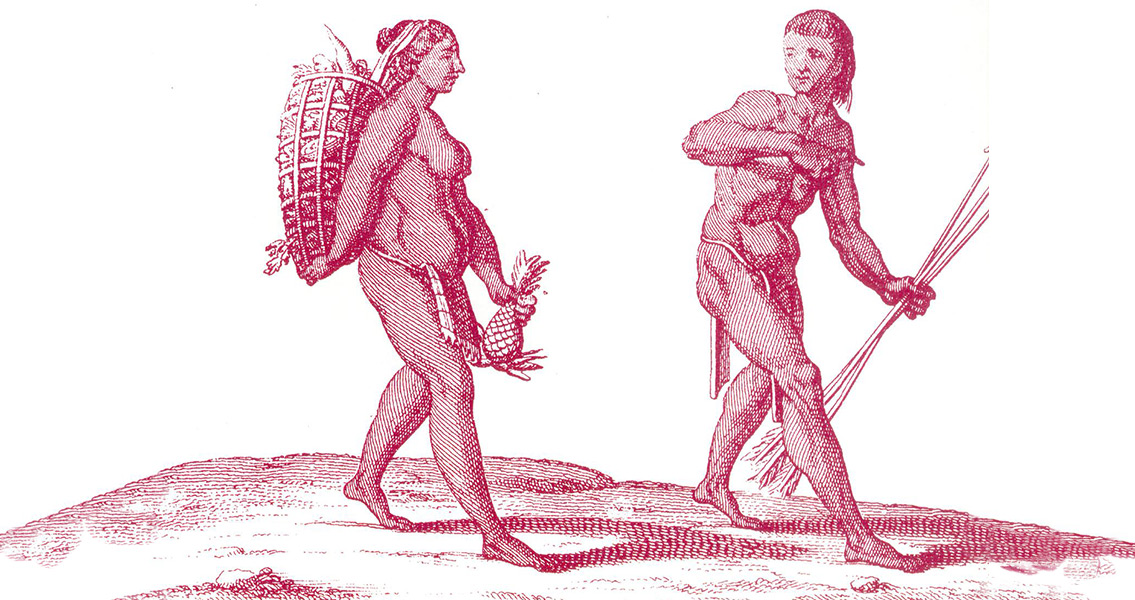<
 New research has, however, challenged this model.
“The concept of intensification has become widely linked to hunter-gatherer research,” Christopher Morgan explains in an article published in the most recent edition of the Journal of Archaeological Research. Intensification, Morgan states, has been used to explain the evolution of human behaviour, the origin of farming, and the development of rank in complex hunter-gather societies.
“This has led to diverse and even contradictory applications of the concept of intensification, to the point that a critical assessment of its current methodological and theoretical applications to the archaeology of hunter-gatherers is overdue.”
One of the key problems Morgan has with the intensification model is that it does not analyse the conditions which gave rise to increased agricultural production. It is unclear, Morgan argues, whether increasing population, climate change, or changes in social behaviour drove intensification.
Further, the intensification model does not examine whether abundance or scarcity drove the development of agricultural societies. Particularly in North America, it is unclear if hunter-gatherers were starving, and consequently intensified in search of a means to supplement their diet, or if they had such a surplus of food that they could explore how to increase production further.
Morgan is particularly hostile to the intensification model as it is often used loosely. “One side of this divide uses intensification in a descriptive sense, where it is simply taken to mean any increase in economic productivity. The other uses intensification in an explanatory sense, where it is employed to explain how people solved population-resource imbalances,” he argues.
Interesting though the intensification model is, it obviously has significant problems. How far we can apply this model to early societies is debatable.
Morgan views intensification as an important consideration in the debate, but warns that over-use of the model can hamper our understanding of the past. With proper refinement and analysis, however, intensification has the potential to open the door to a much more nuanced understanding of how diversification occurred.
For more information: www.link.springer.com
Image courtesy of Wikimedia Commons user: Cropbot]]>
New research has, however, challenged this model.
“The concept of intensification has become widely linked to hunter-gatherer research,” Christopher Morgan explains in an article published in the most recent edition of the Journal of Archaeological Research. Intensification, Morgan states, has been used to explain the evolution of human behaviour, the origin of farming, and the development of rank in complex hunter-gather societies.
“This has led to diverse and even contradictory applications of the concept of intensification, to the point that a critical assessment of its current methodological and theoretical applications to the archaeology of hunter-gatherers is overdue.”
One of the key problems Morgan has with the intensification model is that it does not analyse the conditions which gave rise to increased agricultural production. It is unclear, Morgan argues, whether increasing population, climate change, or changes in social behaviour drove intensification.
Further, the intensification model does not examine whether abundance or scarcity drove the development of agricultural societies. Particularly in North America, it is unclear if hunter-gatherers were starving, and consequently intensified in search of a means to supplement their diet, or if they had such a surplus of food that they could explore how to increase production further.
Morgan is particularly hostile to the intensification model as it is often used loosely. “One side of this divide uses intensification in a descriptive sense, where it is simply taken to mean any increase in economic productivity. The other uses intensification in an explanatory sense, where it is employed to explain how people solved population-resource imbalances,” he argues.
Interesting though the intensification model is, it obviously has significant problems. How far we can apply this model to early societies is debatable.
Morgan views intensification as an important consideration in the debate, but warns that over-use of the model can hamper our understanding of the past. With proper refinement and analysis, however, intensification has the potential to open the door to a much more nuanced understanding of how diversification occurred.
For more information: www.link.springer.com
Image courtesy of Wikimedia Commons user: Cropbot]]>

